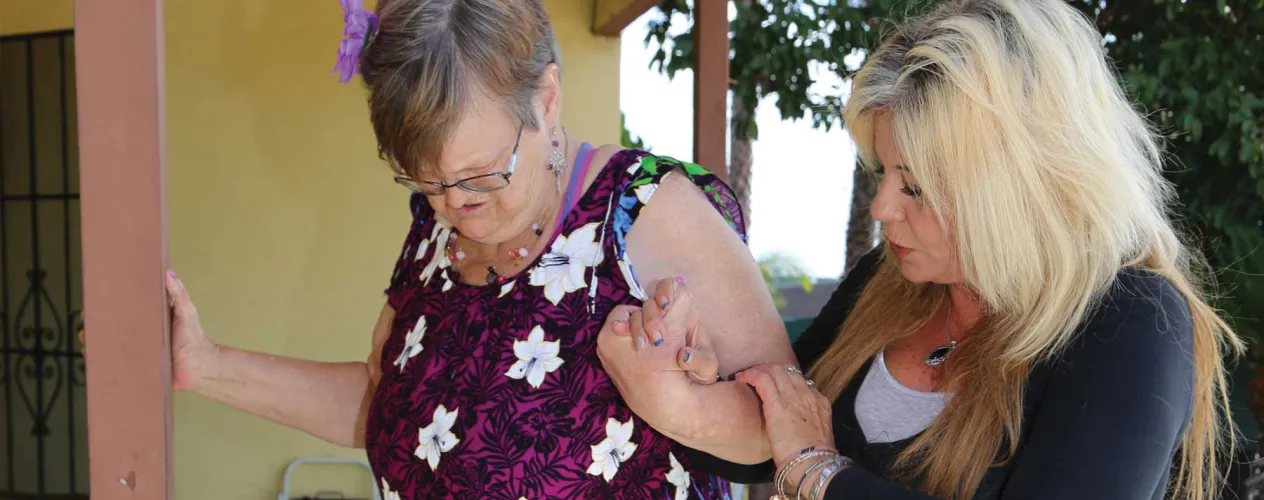Safe at Home
A growing population depends on long-term care support and services, but such assistance is expensive and rarely covered by private insurance. An FSPH team is working with a coalition of advocates to produce data that can inform solutions.

IN CALIFORNIA and nationally, the health care system is geared to meeting the immediate needs of individuals when they’re sick, notes Kathryn Kietzman, a research scientist at FSPH’s UCLA Center for Health Policy Research (CHPR). But for seniors and others with chronic disabilities, the long-term services and supports (LTSS) required for daily living often go unaddressed.
“Many people assume that when they get older and need some help in their home, Medicare will cover that, but it usually doesn’t,” says Kietzman, who has studied the health- and social-care needs of the most physically, socially, and financially vulnerable older adults, many of whom rely on LTSS to continue living independently at home. “Medicare covers a limited amount of post-acute care, but what it fails to address is where so much of health happens, which is outside of the clinical setting.” Often, this means paying LTSS costs out of pocket, which can be exorbitant and result in medical bankruptcy, Kietzman says.
Nearly 8 million Californians are either 65-and-older or have disabilities — a population that’s expected to rise substantially over the next decade. That means a growing population requiring assistance with activities such as household chores, obtaining groceries, and transportation to medical and other appointments. “We’ve learned from our earlier studies that just a couple of hours a day with a personal care worker can make or break people’s ability to continue living in their homes,” Kietzman says. “Minus those hours, at-risk individuals are much more susceptible to needing emergency-room or institutional care.”
In response to this concern, 20 organizations dedicated to finding affordable financing solutions to strengthen the state’s LTSS system have joined to form the California Aging and Disability Alliance. The alliance was successful in securing $3 million in the state’s 2018-19 budget to develop content in the California Health Interview Survey (CHIS) that will begin to produce the data needed to help policymakers better understand the use of, and demand for, LTSS in California.
With Kietzman’s input, CHIS — the nation’s largest population- based state health survey, based in the CHPR — has added LTSS screening questions and in 2019 began administering a 15-minute survey to approximately 2,000 respondents with LTSS needs, with a follow-up four years later. In between, the CHPR team will conduct in-person, in-depth interviews with 100 Californians with LTSS needs to complement and contextualize the findings from the first survey and inform content for the follow-up. The survey questions will be developed with the input of a broad range of stakeholders.
“This is a different kind of prevention than what we typically think about in public health,” Kietzman says. “Investing in LTSS can help to prevent dramatic declines that lead to hospitalizations and the need for institutional care. It can save money by allowing those individuals to stay at home, where most people would rather be, and with an increased quality of life. But in order to come up with a plan to change the way longterm services and supports are financed and delivered, we need statewide data on this issue.”